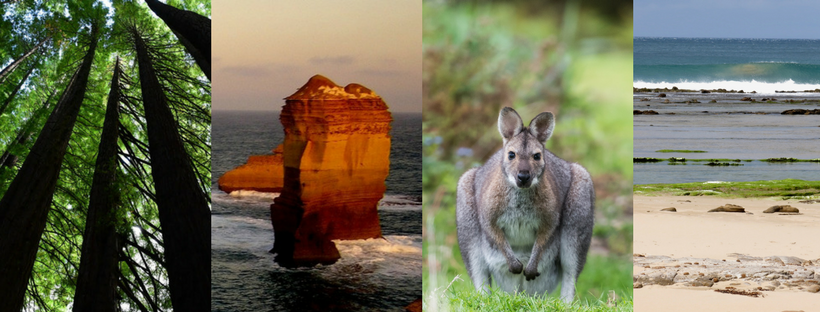The Great Ocean Road is a dream destination for the keen photographer. It’s a great location for capturing spectacular landscape photos, but for a bit of added interest your photography can also include native wildlife, lighthouses, shipwrecks, and dramatic star-filled night skies.

Here are some of our top photography tips:
- Firstly, if you’re keen to take some photos around the coast, remember to take lots of care. The ocean can be rough and unpredictable so keep yourself safe and make sure you don’t slip.
- Depending on the time of year and the weather conditions, you may wish to consider using a waterproof cover to protect your camera from either the rain or the ocean spray.
- If you have a variety of lenses, don’t forget to bring them all, as you’ll have a wide range of subjects to photograph, from panoramic landscape vistas to moving birds and shy wildlife.
- You don’t necessarily need a fancy camera. Sure, the latest equipment can increase your chances of getting some great shots, but most people can manage some amazing photography here using a simple smartphone or iPad.
- Early morning is a great time to take photos. The light is often more soft, and there’s more chance of spotting kangaroos and wallabies.
- Sunrise and sunset are great times of day to photograph the famous Twelve Apostles – there are fewer crowds around and the colours can be magnificent.
- Make sure you also venture inland from the coast. The Great Otway National Park is pretty and green, and its many waterfalls are particularly photogenic after rain.
- A tripod can be really handy but don’t leave it unattended. We often have windy days on the Great Ocean Road and a sudden gust could blow your equipment over.
- Don’t be tempted to stick to colour photography. Some scenes, especially shipwrecks, can work really well in black & white or sepia tones.
- On a clear night, the Milky Way can be seen from Alkina Lodge. Night photography can be truly jaw dropping, but you’ll need to fully understand the settings on your camera to get the best shots. Click here to read more about night time photography.
- Patience is your best friend when it comes to wildlife photography. If you’re staying at Alkina Lodge you’ll have plenty of opportunities to photograph kangaroos and wallabies right outside the lodges. While you’re exploring the region you might also manage to photograph a koala or echidna. Whatever your subject, our number one tip is to respect it. Please don’t get too close or do anything to alarm our native wildlife.
- If you’re here between June and October, it’s whale watching season. You can read more about it by clicking here. It can be quite tricky to get a good whale photo – they don’t tend to stay still for long! Come prepared with a good zoom lens and lots of patience, and we hope you’ll get some of those magical shots!
- If you have the budget, we really recommend a helicopter ride over the coastline: photos taken from the air can be truly dramatic.
So – capture what you see, capture what you feel, have fun and experiment with your photography. And if you’re Instagramming along the way, remember to tag us with @AlkinaLodge – we’d love to see your photos!
Getting There
The Great Ocean Road is located in Victoria and stretches for 243 kms, starting at Torquay and ending near Warrnambool. How to get there depends on which part of the Great Ocean Road you’d like to visit. However, the most famous sights such as the 12 Apostles and Port Campbell National Park are located 275 kms west of Melbourne, approximately a 4 hour drive along the Great Ocean Road.
Where To Stay
Accommodation is available at Alkina Lodge here or call (+61 3 5348 2008) with prices starting from $297.50 per person per night (based on twin share occupancy and excluding flights).





